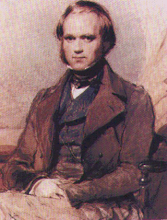
50 million years ago, during the Eocene Epoch of the Cenozoic Era, a sub-tropical lake covered a portion of what is now southwestern Wyoming.
Fossil Butte National Monument preserves in its finely layered sedimentary rocks a window into the aquatic and nearby terrestrial ecosystems of this time. The deposits are famous for the diversity and abundance of its fossil fish, and other fossils include reptiles, birds, insects, plants, and the oldest known fossil bat.
Preservation of these fossils is exquisite, suggesting that conditions at the bottom of the lake were toxic, and excluded the scavengers and decomposers that otherwise would have destroyed these remains.
Workers building the Union Pacific railroad in the late 1860’s discovered the fossil fish beds near the town of Green River, Wyoming, and geologists refer to these fossil-bearing strata as the Green River Formation.
More information from the National Parks Service, here.
http://www.nps.gov/fobu/naturescience/naturalfeaturesandecosystems.htm


No comments:
Post a Comment